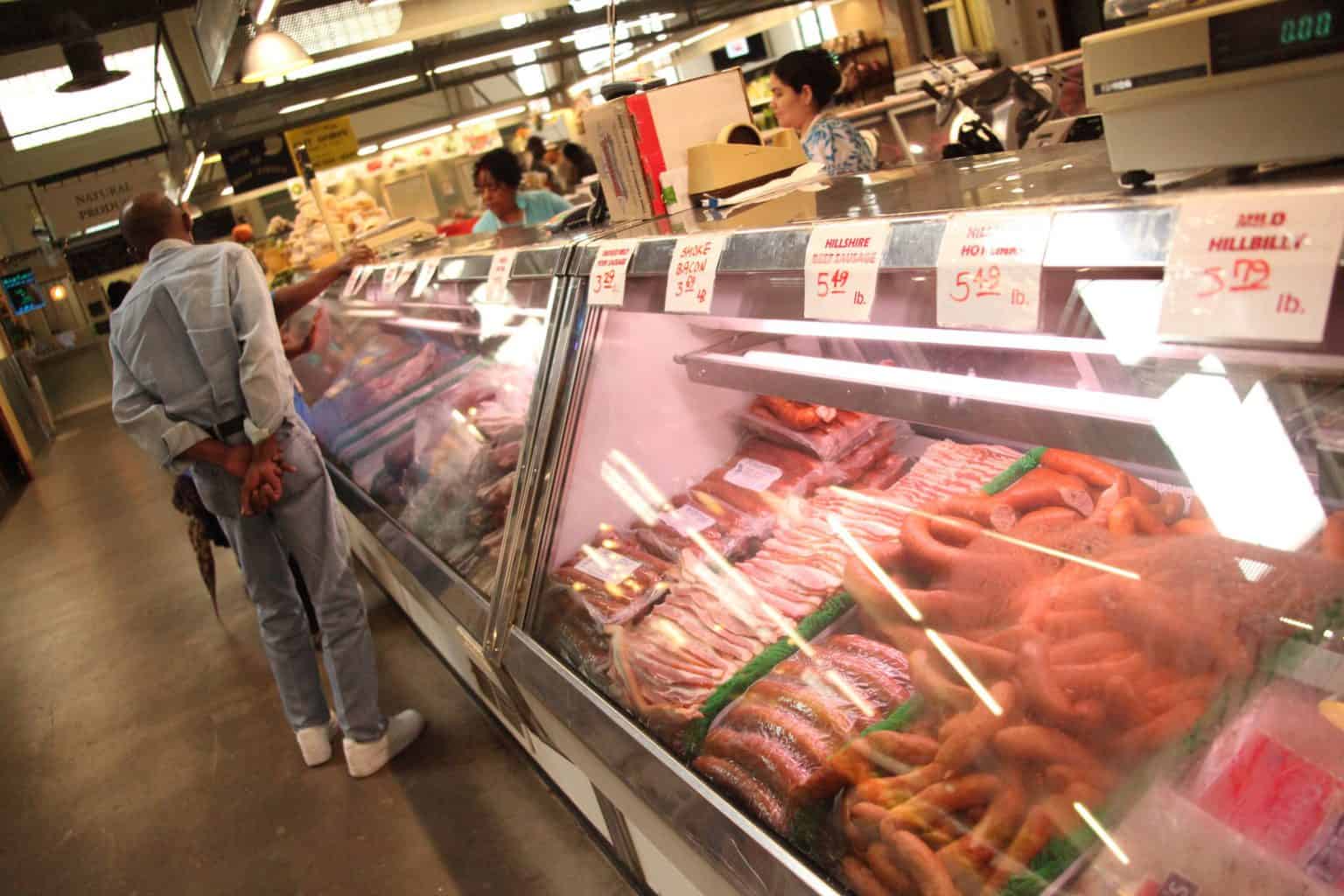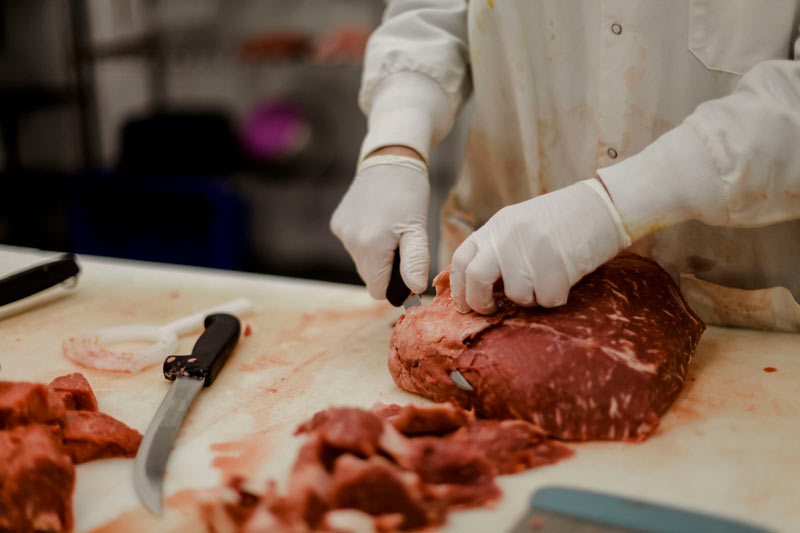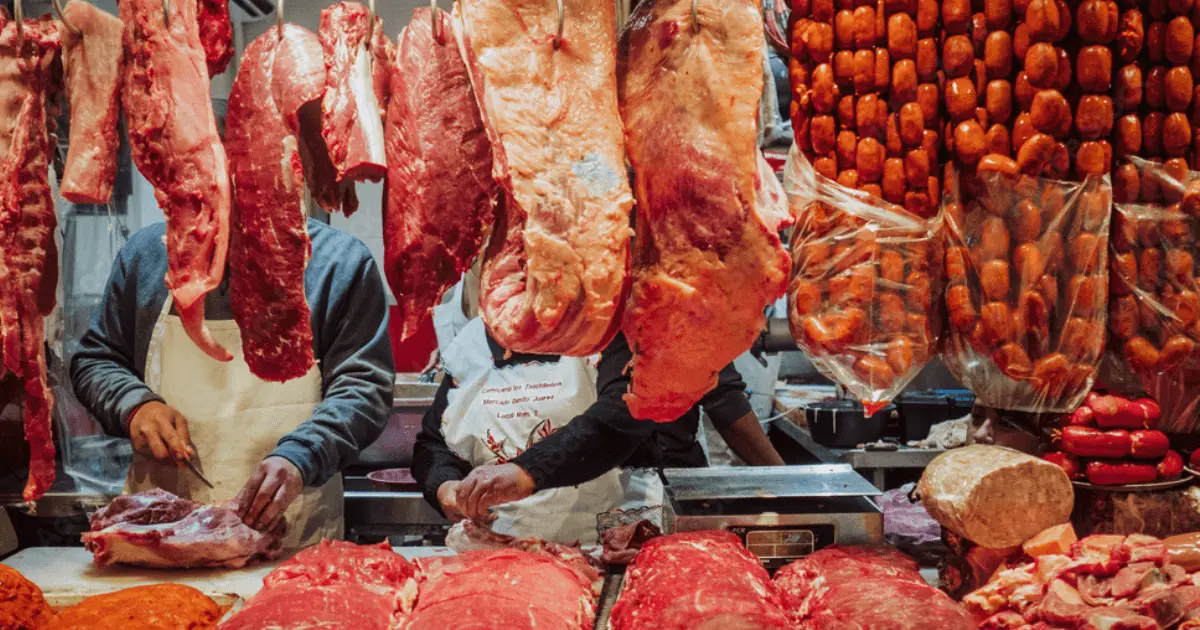Get the Best Bargains on Fresh Meat at Bagley Farms Meat Market Edwardsville IL
Get the Best Bargains on Fresh Meat at Bagley Farms Meat Market Edwardsville IL
Blog Article
Uncover the Art of the Butcher's Cut in a Modern Meat Market
In the ever-evolving landscape of modern-day meat markets, the butcher's cut has transcended its typical roots, combining age-old workmanship with modern practices. bagley farms meat market edwardsville il. Today's butchers are not simply processors of meat; they are knowledgeable artisans that emphasize sustainability and moral sourcing. Their competence in choose and preparing cuts customized to particular culinary needs supplies an exceptional dining experience. Yet, what really establishes the modern-day butcher apart is their ability to create a deeper link in between customers and the origins of their meat. Just how do these masters equilibrium tradition with advancement, and what ramifications does this have for the future of meat consumption?
Evolution of Butchery Techniques

The mid-20th century saw butchery techniques further refined by scientific understandings into muscular tissue biology and meat aging, improving both tenderness and taste. Advancements like vacuum cleaner product packaging and refrigeration extended item shelf-life, allowing butchers to branch out offerings and improve quality assurance. This period likewise noted the surge of customized tools, such as band saws and meat slicers, which boosted accuracy and effectiveness in meat handling.
Electronic systems now aid in tracking animal provenance and enhancing cuts to satisfy particular customer choices. Additionally, a revival in artisanal butchery has actually arised, blending traditional skills with modern expertise to provide to customers seeking moral and sustainable meat choices.

Comprehending Meat Cuts

Understanding the ins and outs of meat cuts is crucial for both butchers and customers seeking quality and value. For butchers, precise cuts show ability and regard for the craft, making sure minimal waste and ideal yield.
The main groups of meat cuts include primitive, sub-primal, and retail cuts. Butchers after that break these down better into sub-primal cuts, before ultimately generating retail cuts available to customers, like ribeye or tenderloin.
Understanding muscular tissue structure is crucial; muscle mass used much more regularly by the animal often tend to be harder and are best suited for sluggish cooking techniques, while less-used muscular tissues, like those found in the loin, are extra tender and perfect for cooking or roasting. Knowledge with these differences encourages consumers to make enlightened choices, enhancing their cooking endeavors.
Choosing High Quality Meat
Picking the right meat entails even more than just picking a visually enticing piece from the display. The art of choosing quality meat needs a discerning eye and knowledge of specific attributes that represent freshness and excellence. Firstly, focus on the color; beef ought to have a bright, cherry-red tone, while lamb ought to show a soft pink tone, and pork a light pink. This shows the meat is fresh and hasn't been subjected to oxygen for also long.
Second of all, consider the marbling, which refers to the white flecks of fat within the muscle mass. Correct marbling is a vital sign of tenderness and flavor, as it thaws throughout cooking, improving the meat's juiciness. Keep in mind, higher marbling frequently associates with premium quality cuts, such as USDA Prime.
Texture is one more critical aspect; meat ought to really feel firm to the touch, not slimy or excessively soft. Furthermore, bear in mind the aroma. Your Domain Name Fresh meat should have a clean, neutral smell, without any type of sour or repulsive odors.
Matching Cuts With Food Preparation Approaches
Efficiently matching cuts of meat with the suitable food preparation techniques is vital for achieving optimum taste and appearance. Various cuts differ in inflammation, marbling, and connective tissue web content, each needing certain strategies to unlock their capacity. For circumstances, tender cuts like filet mignon and ribeye, with their inherent marbling, benefit from high-heat, quick-cooking techniques such as barbecuing or pan-searing. These techniques boost the meat's all-natural tastes and ensure a juicy finish.
On the other hand, harder cuts like brisket and chuck roast are rich in a fantastic read collagen, which breaks down into gelatin when cooked gradually. These cuts are excellent for braising or slow-moving roasting, permitting the meat to soften with time and develop deep, complex flavors. Similarly, cuts such as brief ribs and pork shoulder fare well with slow-cooking methods, where extended cooking times transform their durable appearances right into succulent dishes.
Lamb shanks and oxtail, which require prolonged food preparation to soften, are ideal candidates for cooking or sluggish simmering. These techniques coax out rich, passionate tastes while preserving moisture. By understanding the one-of-a-kind features of each cut, cooks and home cooks alike can elevate their cooking developments, making sure each meal is both satisfying and remarkable.
The Butcher's Duty Today
Browsing the developing landscape of the modern-day meat market, the butcher's function today extends past simple preparation of cuts. Contemporary butchers are cooking artisans, instructors, and advocates for lasting methods. They bridge the void between the farm and the fork by making sure honest sourcing, recognizing pet husbandry, and prioritizing transparency in the supply chain. This change shows the growing consumer need for top quality over amount, where provenance and pet well-being are extremely important.
In enhancement to crafting precise cuts, butchers now involve straight with consumers, using cooking recommendations and customizing selections to match specific requirements and preferences. Their experience in meat aging, marbling, and flavor accounts encourages consumers to make educated choices, boosting their culinary experiences. This individualized solution exhibits the butcher's evolving function as a relied on expert in the kitchen.
In addition, butchers are essential in decreasing waste, utilizing entire animals to produce diverse products such as sausages and supplies - bagley farms meat market edwardsville il. This thorough strategy not just respects the animal best site but likewise lines up with contemporary sustainability goals. In this method, the modern-day butcher personifies both practice and innovation, adapting to an ever-changing market while preserving the artistry and integrity of their craft

Final Thought
The contemporary butcher's craft intricately weaves typical strategies with contemporary developments, emphasizing lasting methods and ethical sourcing. Proficiency in understanding varied meat cuts and high quality indicators equips butchers to offer enlightened suggestions, straightening certain cuts with optimal food preparation techniques. This knowledge not only boosts culinary experiences but additionally enhances the connection in between consumers and the beginnings of their food. By honoring historic methods while embracing modern demands, the butcher's duty stays essential in today's innovative meat market.
Report this page